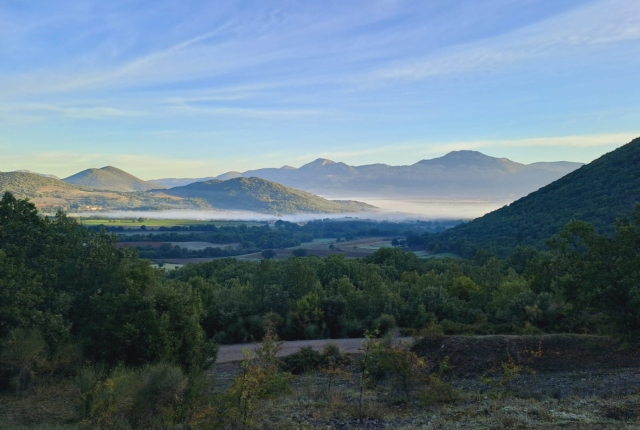Biodiversity Loss: The Impact of Human Activities in Val d'Agri, Basilicata

A research group coordinated by the University of Bologna, in collaboration with ISPRA (Italian Institute for Environmental Protection and Research) and ARPA (Regional Environmental Protection Agency) Basilicata, investigated the impact of human activities on biodiversity in Val d'Agri, in the Basilicata region. This is a sensitive geographical area where industrial and agricultural activities coexist with ecologically significant natural habitats.
The study, published in the journal Environmental Science and Pollution Research, shows a gradual reduction in species diversity as we approach the Val d’Agri industrial area, characterised by a variety of human activities, including hydrocarbon extraction.
“We carried out a multi-taxonomic analysis that examined 151 different species of small mammals, reptiles, birds, beetles, and lichens to study the spatial dynamics and species’ responses to these human-induced pressures”, says Roberto Cazzolla Gatti, professor at the Department of Biological, Geological and Environmental Sciences of the University of Bologna who coordinated the research. “The results revealed a negative relationship between biodiversity and proximity to the Val d’Agri industrial areas, highlighting the heavy damage to nature caused by the activities carried out in the industrial area of Viggiano”.
More specifically, the analysis revealed a strong predominance of generalist species, which possess useful biological traits to adapt to different environments and thrive even in the presence of intense human impact. This is a well-known phenomenon called “biotic homogenisation”, in which generalist species replace specialist species, thus reducing the functional diversity of ecosystems.
“We have observed a predominance of generalist biological traits in all the sites of the study, rather than an increase in specialist species”, says Cazzolla Gatti. “This may reflect the homogenising effect of several human activities that cause habitat fragmentation and a greater mortality of specialist organisms, underlining the lasting influence of these activities on the Val d'Agri biodiversity”.
Among lichens, 70% of the identified species showed a moderate or high tolerance to human disturbances, suggesting an effective colonisation of the areas most affected by human activities. Likewise, the survey on birds showed the prevalence of generalist species, with a large presence, for example, of blackcaps (Sylvia atricapilla), capable of modifying their diet according to the seasons, and blue tits (Cyanistes caeruleus), capable of switching from an insectivorous diet to an omnivorous diet, thus adapting to inhabited areas.
The study also highlighted the presence of numerous protected species, including endemic species of the Italian peninsula and Southern Italy. This factor, as emphasised by the researchers, further strengthens the need for conservation initiatives, the protection of these species and their habitats, and the preservation of biodiversity and ecosystem integrity, particularly to mitigate industrial impact.
The study was published in Environmental Science and Pollution Research with the title “Assessing the effects of anthropogenic pressures on biodiversity: a multi-taxonomic approach in Basilicata, Italy”. Francesca Maura Cassola, Jacopo Iaria, Matilde Martini, Francesco Santi, Mara De Silvestri, Davide Lattarulo, Jennifer Rossin, and Roberto Cazzolla Gatti from the Department of Biological, Geological, and Environmental Sciences participated from the University of Bologna.





